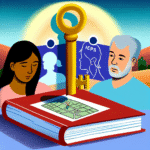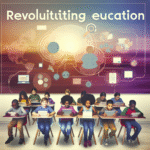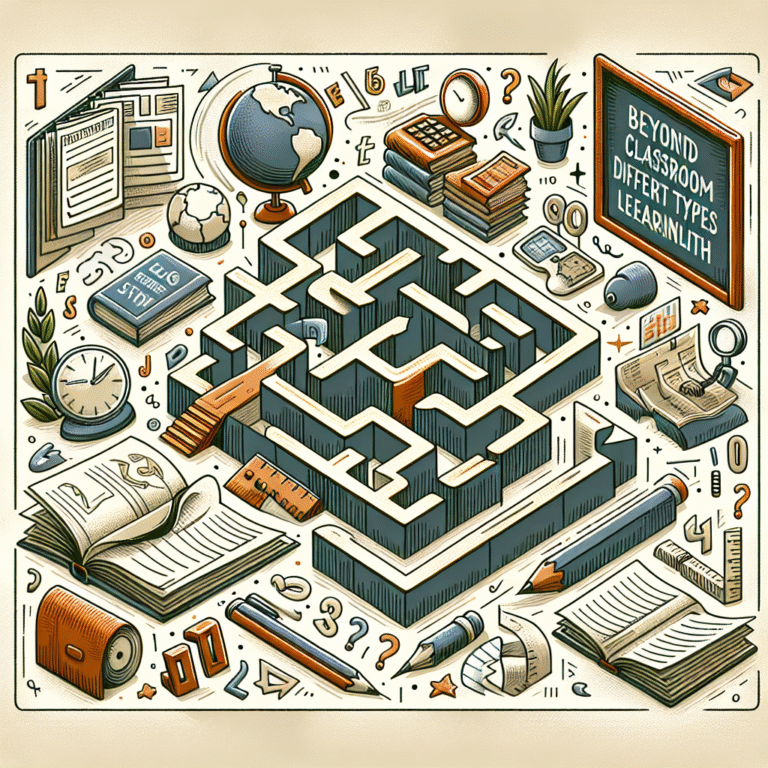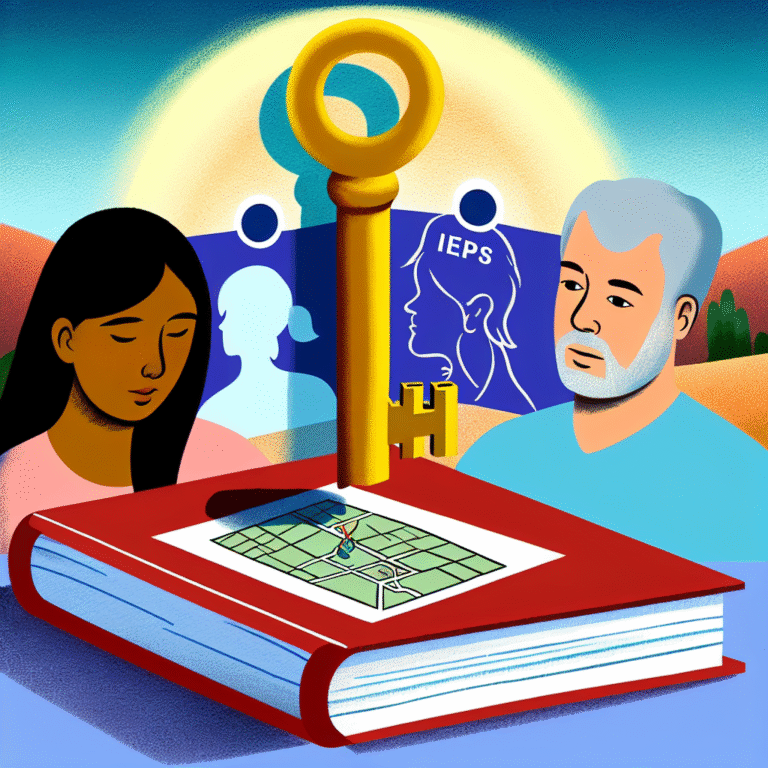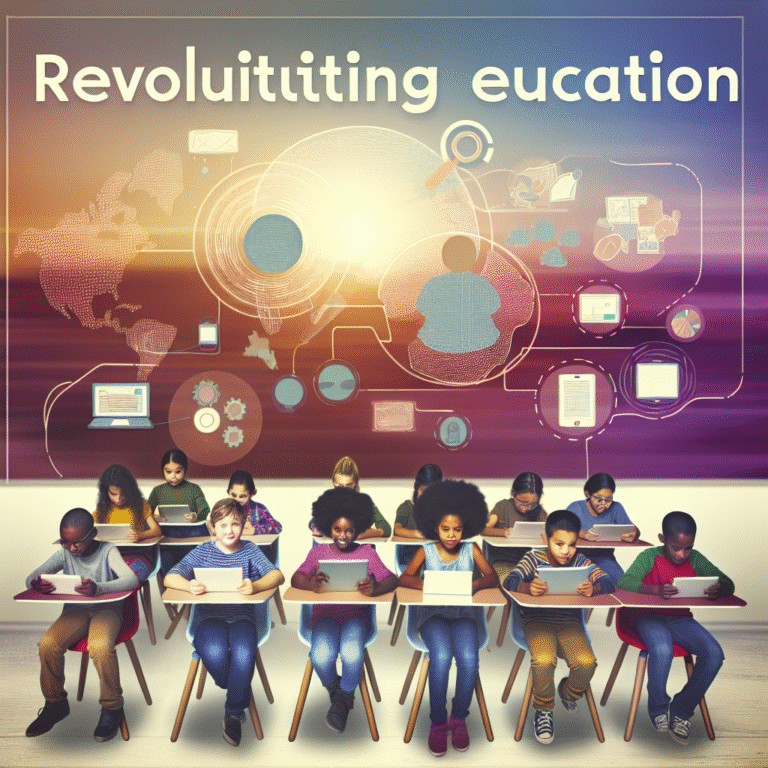
Building Bridges: The Essential Importance of Support Networks for Learning Disabilities
Introduction
In a world that celebrates diversity, individuals with learning disabilities often face unique challenges that can hinder their educational journeys and personal growth. Navigating these challenges can feel overwhelming, not only for the individuals directly affected but also for their families, educators, and communities. However, there’s a powerful solution that can transform their experiences: support networks. In this article, titled Building Bridges: The Essential Importance of Support Networks for Learning Disabilities, we will explore how these networks strengthen the fabric of support for individuals with learning disabilities, enabling them to thrive in educational settings and beyond.
But why is this topic so crucial? As educational systems evolve and become more inclusive, understanding and fostering connections can elevate the learning experiences of those with disabilities. Building bridges—that is, creating solid support networks—can significantly alleviate the pressures these individuals face, instilling hope and resilience. By pooling resources, sharing experiences, and encouraging advocacy, these networks create a holistic approach to manage learning disabilities effectively.
The Foundation of Support Networks
Defining Support Networks
Support networks encompass a variety of relationships and resources that provide emotional, social, and practical assistance. For individuals with learning disabilities, this can include family members, friends, educators, specialists, peers, and community organizations. Each element contributes to creating a robust support system, ensuring the individual feels understood and empowered.
[Table 1: Components of Support Networks]
| Component | Description |
|---|---|
| Family Support | Emotional and practical guidance from family members |
| Peer Support | Shared experiences and understanding among peers |
| Educational Support | Specialized instruction and advocacy from educators |
| Community Resources | Programs, workshops, and services dedicated to learning disabilities |
| Professional Assistance | Counseling, therapy, and mentorship from specialists |
The Role of Family Support
Family serves as the first line of support for individuals with learning disabilities. Families who are educated about the nature of these disabilities can become advocates, seeking resources that cater to their loved ones’ specific needs. A case study featuring the Rodriguez family highlights how crucial family involvement can be. Their son, diagnosed with dyslexia, struggled significantly in literacy. Through workshops and training, the Rodriguez family learned effective strategies to support their son, such as creating a structured reading environment and using technology to assist in learning. This active engagement not only improved their son’s academic performance but also strengthened their family bond.
Educational Support: Bridging Gaps
Educational institutions play a pivotal role in fostering supportive environments. Special programs and inclusive classrooms are vital to bridging the knowledge gap for students with learning disabilities. A study on inclusive teaching methods within high schools shows that collaborative teaching—where special education and general education teachers co-teach—can lead to significant improvements in students’ engagement and achievement levels. By working together, educators can create resources that accommodate diverse learning styles, ensuring no student is left behind.
The Power of Peer Support
Building Peer Connections
Peer support is an often-underestimated aspect of a solid support network. Shared experiences among students with learning disabilities can create a sense of belonging and understanding. In a program designed for students with ADHD, the results were remarkable. Facilitated peer groups met regularly to discuss challenges and share coping strategies. Participants reported a 40% increase in confidence and a noticeable reduction in feelings of isolation.
[Chart 1: Peer Support Program Impact]
| Area of Improvement | Percentage Increase |
|---|---|
| Confidence | 40% |
| Academic Engagement | 30% |
| Social Skills Enhancement | 25% |
| Emotional Well-being | 35% |
Establishing Peer Mentorship
Mentorship programs are another powerful component of peer support. This unique approach pairs individuals with disabilities with mentors who have similar experiences. For instance, the "Bridging the Gap" program connects high school seniors with younger students who struggle with similar learning challenges. The mutual benefit of this arrangement—offering guidance to those just starting their journey while providing a sense of responsibility and confidence to the mentors—is profound.
Community Resources: Expanding Support Networks
Local Organizations and Advocacy
Community organizations are essential for individuals with learning disabilities. They provide resources, support groups, and advocacy initiatives. A notable case study from a community-focused nonprofit organization reveals how focused initiatives lead to increased accessibility and awareness. By bringing together families, educators, and advocates, the "Learning Together" organization hosted workshops that educated the community about learning disabilities. Participants reported feeling more empowered to seek out resources, share stories, and build networks that could support their own needs and those of others.
Utilizing Technology for Building Bridges
In today’s digital age, technology offers new avenues for building support networks. Online platforms can facilitate connections among individuals with learning disabilities, providing space for them to share resources, advice, and encouragement. The rise of social media groups dedicated to specific disabilities and peer support networks illustrates how technology can enhance visibility and accessibility.
Case Studies in Successful Support Networks
Case Study 1: The Donnelly Team
A unique collaboration involved a school district that prioritized mental health and learning disabilities. The "Donnelly Team" integrated input from students, parents, and teachers to develop an effective support structure. The program featured interdisciplinary teams that included psychologists, social workers, and special education teachers. Results from this initiative indicated a measurable increase in students’ feelings of support, alongside improved academic performance.
Analysis
The Donnelly Team’s multidisciplinary approach exemplifies how collaborative efforts can build bridges across support networks, addressing various needs through a unified strategy.
Case Study 2: The Carter Family Network
This family-based program focused on parent training and support. The Carter family faced numerous challenges with their son’s ADD. By joining a local support group and connecting with other families dealing with similar issues, they learned strategies that transformed their approach. The sharing of personal experiences and coping methods not only helped them but also allowed them to assist others.
Analysis
The success of the Carter family’s journey illustrates that even within families, creating networks of support can be transformative, encouraging collaboration and solidarity that leads to improvement in coping and outcomes.
Creating Actionable Steps for Building Support Networks
Developing Strong Communication Channels
Successful support networks often rely on clear communication. Establishing regular check-ins among family, educators, and peers fosters an environment where concerns can be raised openly and promptly addressed. Utilizing tools like shared calendars, WhatsApp groups, or even collaborative platforms can enhance communication and coordination between all parties involved.
Fostering a Culture of Inclusion
Creating an inclusive culture requires intentional efforts. Schools must strive to implement inclusive practices that emphasize understanding and accommodation for diverse learners. Providing training for staff, encouraging parental involvement, and maintaining open channels of communication can enhance this culture.
Conclusion
As we reflect on Building Bridges: The Essential Importance of Support Networks for Learning Disabilities, it’s evident that the journey for individuals with learning disabilities is profoundly impacted by the communities and frameworks surrounding them. By establishing robust support networks involving families, peers, educators, and community organizations, we can create environments that double as havens of understanding and empowerment.
Every step taken toward fostering these bridges offers an opportunity for change—a chance to rewrite narratives for individuals grappling with learning disabilities. Therefore, let us take this knowledge to heart and begin building the bridges that can elevate the experiences of those who navigate learning disabilities.
FAQs Section
1. What are learning disabilities?
Learning disabilities are neurological conditions that affect the way individuals process information, affecting skills such as reading, writing, and math. They can also impact organizational skills and social interactions.
2. How do support networks help individuals with learning disabilities?
Support networks provide emotional, social, and practical guidance, which can enhance academic performance, boost confidence, and reduce feelings of isolation.
3. What are some examples of community resources?
Local organizations often provide workshops, counseling services, advocacy, and peer support programs designed for individuals with learning disabilities and their families.
4. How can I get involved in building support networks?
You can participate by joining local support groups, volunteering with community organizations, or fostering open discussions about learning disabilities within your own network.
5. What role does technology play in support networks?
Technology can facilitate communication, access to resources, and connections among individuals with learning disabilities, enhancing networks beyond geographical limitations.
In this quest to build bridges, every effort counts. Together, we can foster inclusive environments that allow individuals with learning disabilities to flourish. The future is bright, filled with possibilities for transformation—let’s seize them together!

